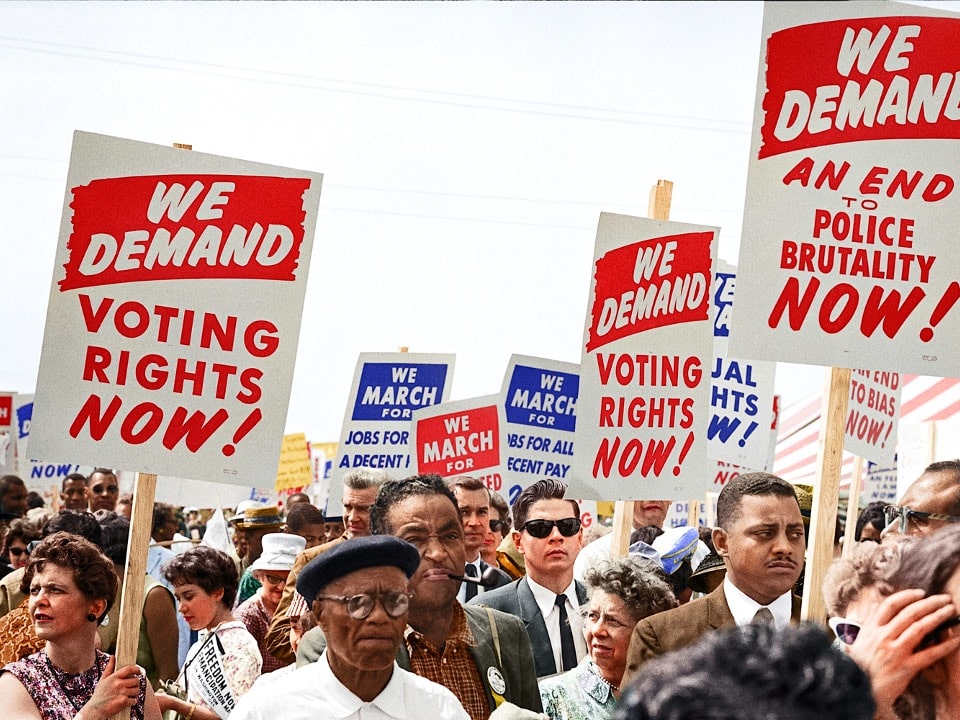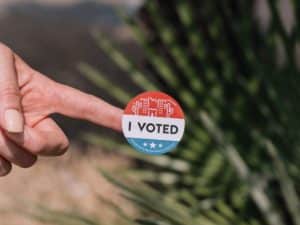We call it Civics, not Government, class because its purpose is to instill a sense of citizen duty and participation, not just a memorization of concepts and amendments.
Yet, in reality, how much of our class time is dedicated to allowing students to participate? Probably less than we’d care to admit, right? No, shame! It’s the reality of a long list of standards and our touchy political climate.
The great news is that there are many real-world projects your students can easily do in just a class period or two.
I think that’s the biggest misunderstanding about PBL-style learning—that one project, thus one topic, takes up weeks you simply don’t have. All the ones I’m sharing below integrate into your existing units and take minimal class time.
Here are my nine favorite Civics PBL project ideas:
1. Goal Set With the Preamble
Despite being written at the last minute as a purely stylistic element, the Preamble to the US Constitution is a fantastic model of a mission statement.
As you analyze it with your students, spend a few minutes looking at it from this goal-setting angle. And since this topic usually comes at the beginning of the semester, it’s the perfect time to challenge students to write a goal statement themselves.
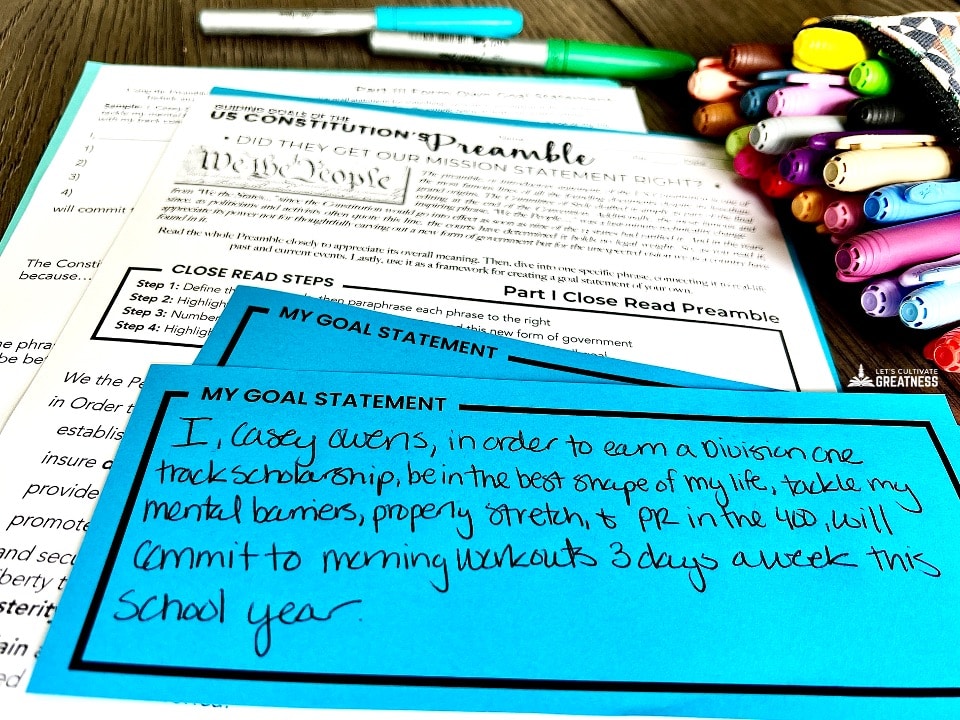
Have students follow the Preamble’s structure or simply take inspiration from it. Then, encourage them to post their goal somewhere as a reminder. A few times during the semester, check in with them about how their goal is going.
If you want this as a ready-to-go activity, check out my Preamble Analysis & Goal Setting Project Kit.
2. Pre-Register Students to Vote
Every state allows teens to pre-register to vote. Half the states allow it at teens’ 16th or 17th birthday, the remaining allow it in the months leading up to turning 18.
Pencil in 20 minutes one day to give students time to do so. Typically, it can be done online or with a paper form. Procedures and deadlines differ by state, so look into this well before Election Day if you’re doing it in the fall. The website Vote.gov is a great starting point.
The fourth Tuesday in September is designated as National Voter Registration Day. If you can do it on that day, fantastic, but really, any day is a great day to register to vote.
Remember to stress that Americans also have the right not to register to vote, so no student should feel pressured to register if they don’t want to.
3. Email or Call Government Officials
Find at least one small way to connect with an elected official during class. Here are two ways we do in mine:
During odd-year elections, it’s just local races. This means candidates don’t have expansive websites for students to explore. Instead, we compile a list of questions and email them directly to candidates. Their responses become what students read to prepare for our mock election.
You better believe my students decide which candidates they support based on the answers we receive. It is so cool to see their strong opinions on school board or mayoral candidates, which are the types of races with the lowest voter turnout.
Your legislative branch unit also is an easy way for students to connect with elected officials. Have them write a letter or call their office about an important issue.
My Letter to an Elected Official Kit works for any situation and can be easily done in a couple of class periods.
These interactions are way more empowering than having an elected official come in as a guest speaker because they have students being a participant in their democracy.
4. Create Political Party Ideology Quizzes
I’ve found, for a few reasons, the “Are you Republican or Democrat?” can be somewhat problematic to use in class.
First, students usually don’t have background knowledge of the topics being asked about. Second, no quiz itself is going to be wholly unbiased. Third, party platforms are constantly evolving.
Instead, it’s much more impactful, real-world, and, frankly, easier for students to create their own. We make them by going directly to the sources—the party platforms themselves. I detail it all in this blog post, but here’s the gist.
I have students read and compare the platforms’ preambles. They’re only a few paragraphs, so easy to make connections and inferences about. Then, I assign students to one of a dozen or so policy issues to look up within the preambles—things like gun policy, taxes, and education.
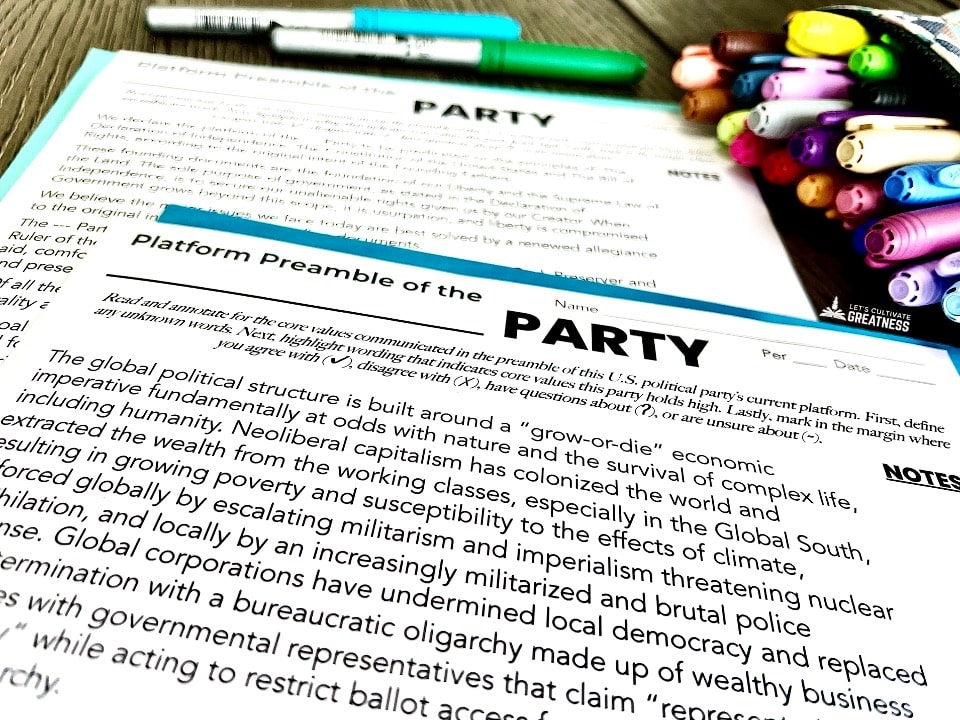
Then, they each make an issue-specific interactive poster, which turns into a powerful gallery walk activity and later a bulletin board display for the whole school.
Grab my Party Platforms Poster Kit to do this PBL project with your students!
5. Host a Mock Election
This should be a no-brainer, but in today’s political climate, it’s not uncommon for schools to tell teachers not to mention anything about that year’s election.
What a tragedy when voting is arguably our most essential right in a representative democracy and requires know-how. If you have been given these directives, push back a little. Your admin likely isn’t distinguishing the difference between talking about politics and talking about the election process.
Whether it’s a hotly contested presidential race year or a quiet “off-year,” if you are teaching civics in the fall, have students research and vote on something on the ballot.
In doing so, they’ll learn where to find reliable information, how to weigh and decide among multiple options, and how to compare their results with the real ones after Election Day.
I like to make photocopies of the actual mail-in ballot for students to vote with. This makes the process feel more official and demystifies it. Your local elections office should also be able to give you some “I Voted” stickers to hand out.
6. Make Federal Officer Posters
This is a great project to do when covering the three branches. Decide if you want to do them all at once after covering the three branches or focus on the officers of one branch at a time. Whichever approach, assign students to an officer to research and create a one-pager about their background, goals, and accomplishments in office.
I include our state’s and leadership members of Congress, Cabinet members, and the nine Supreme Court Justices.
The day after the one-pagers are due, students view them all in a gallery walk to take notes and answer questions like “How well are these officers representing you?”
Afterward, this also makes a great bulletin board display for the whole school.
You can use my Federal Officer Poster Kit to do this same project with your students!
7. Complete Acts of Civics Participation
You likely have a standard or two that involve a civics service project or civic participation, which, of course, sounds amazing but also a little unrealistic. However, that’s the ultimate PBL for a Civics & Government class, isn’t it? So, challenge students to do small things that don’t require instructional time. Brainstorm a list of things like attending a school board meeting, writing a letter to the editor, or following your elected officials on social media.
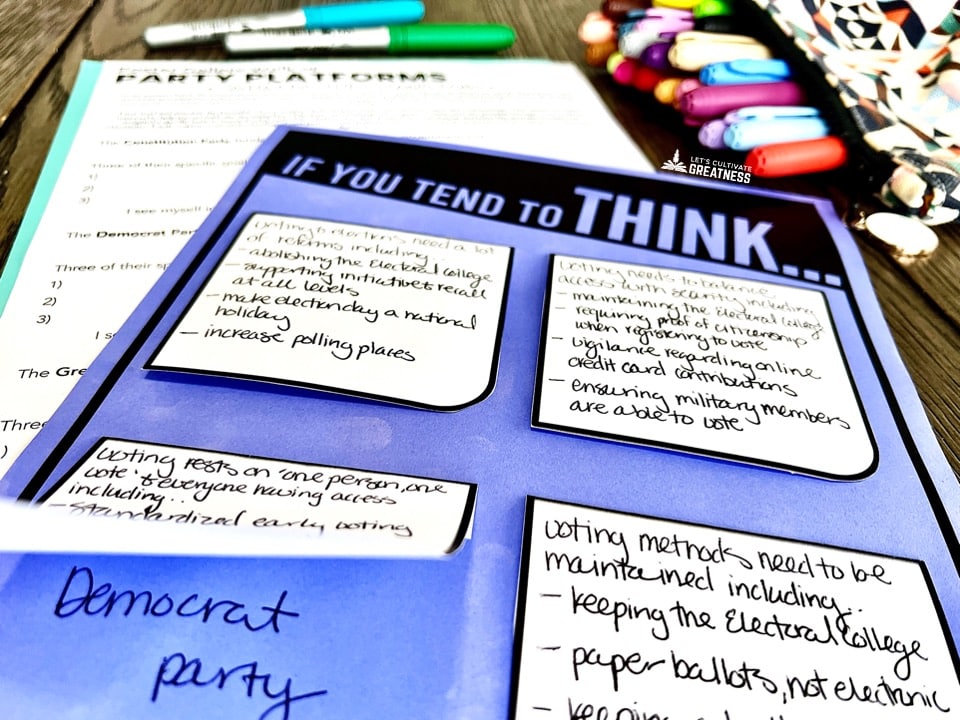
I make it a fun BINGO-board-style game, challenging students to complete five in a row every quarter.
8. Interview a Community Member
This is one project I especially carve a few class periods out for. It can tie to any of your units, which is why I like it so much.
I assign it in our Three Branches unit since the overarching inquiry question is, “How well does our government function as a representative democracy?” It’s such a great question for this project.
Students pick someone to interview who has a unique perspective on it—a veteran, a person of a different political leaning, a government worker, or a business owner. The great thing is that everyone, in some way, has something to say on that topic!
Such essential life skills are practiced—being comfortable talking with an unfamiliar adult, chewing on difficult questions, and reflecting on positions different from one’s own—it’s well worth the few class periods we spend preparing questions and writing a post-interview reflection.
And their write-ups are true treasures. Just a few months after this project one year, a student’s grandfather passed, and if it weren’t for her interview, she and her parents would have never known certain details about his immigration story. These are the moments teaching is made up of.
This project is included in my complete Three Branches PBL unit, or you can grab my universal Interview PBL Project Kit to use with any class and any topic!
9. Create Free Speech Buttons
This is a great project to complete when covering civil rights and the Bill of Rights. It’s part of my Civil Liberties PBL unit.
First, we do a short deep dive into the details of how the First Amendment applies within the walls of public schools. Then, students create a button expressing their views on an issue. The catch is that their design must fall within their Constitutional rights while at school.
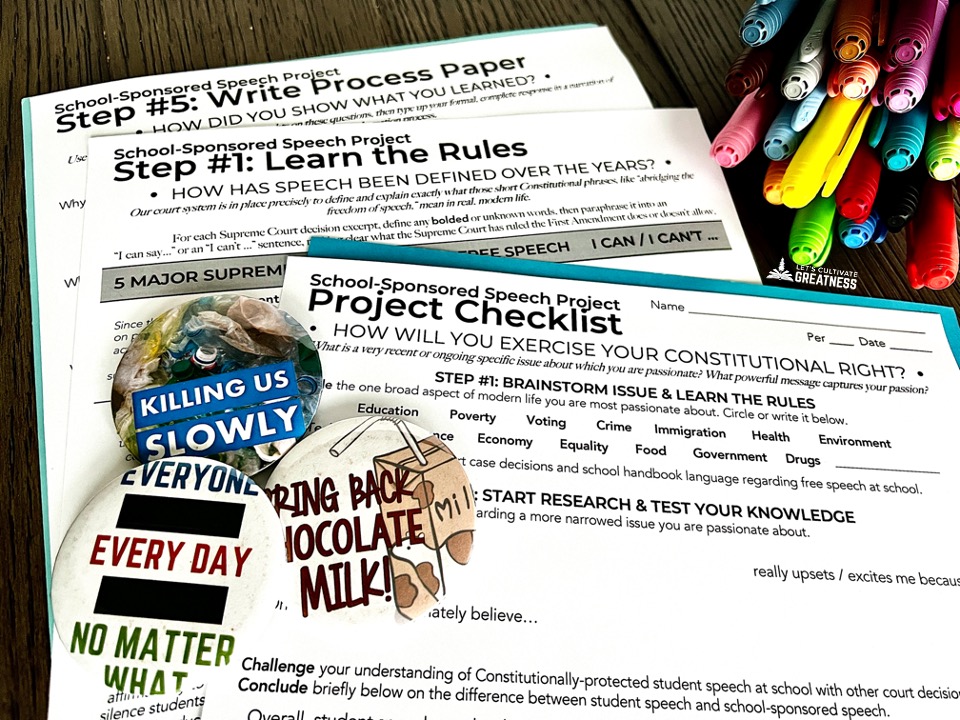
Talk about an authentic PBL project! I love seeing their buttons pinned to their backpacks for the rest of the year. Check out my Free Speech Project Kit to try it out in your class too.
So, no matter how tight your scope and sequence are, I hope you can wiggle in some of these doable Civics project ideas! And if teaching a project-based approach to Civics sounds exactly like what you’re looking for, check out my done-for-you Civics & Government Inquiry PBL course curriculum!
Feature image credit: March on Washington, 1963. Taken by Marion S. Trikosko.

